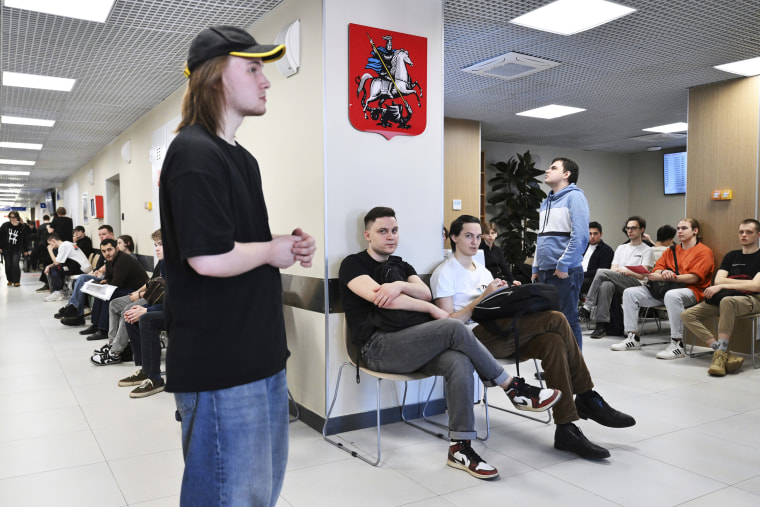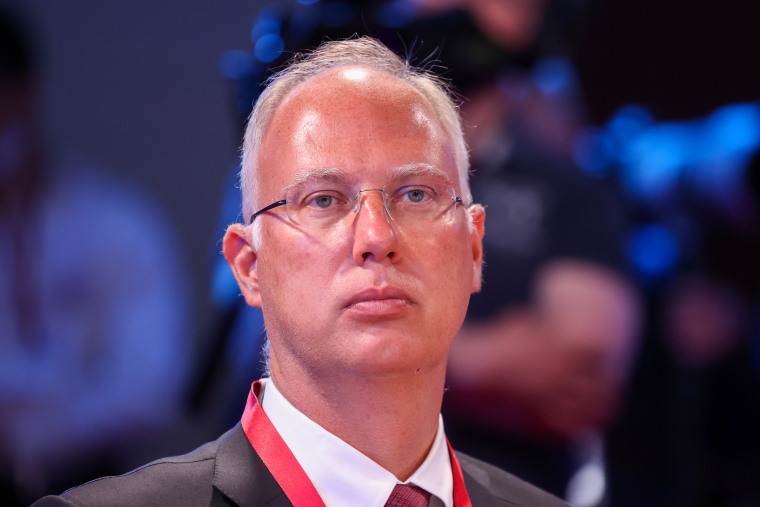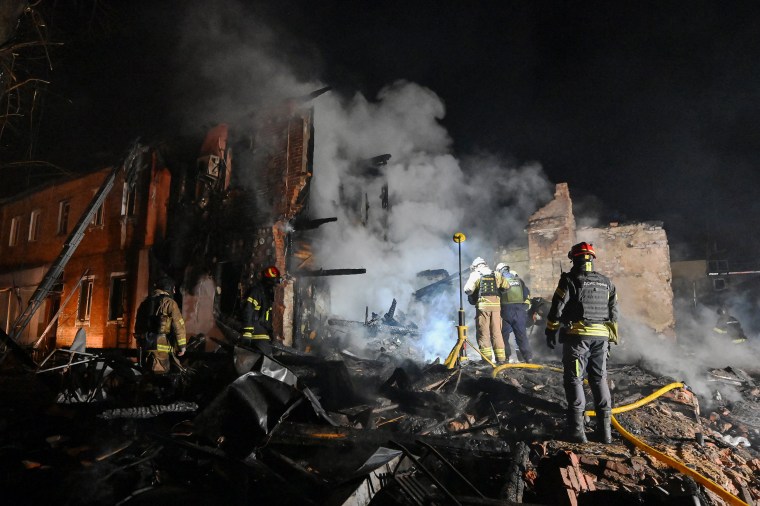To the casual observer, Russia seems to be marching in two opposite directions.
President Vladimir Putin sent one of his close allies, Kirill Dmitriev, to Washington this week for diplomatic talks, the most senior Kremlin official to visit since Russia invaded Ukraine.
At the same time, Putin ordered the mobilization of 160,000 troops, his largest in 14 years, as his drones continue their nightly bombardment of Ukrainian civilians and he plans a spring offensive — if Ukrainian President Volodymyr Zelenskyy is to be believed.
But these twin approaches perfectly illustrate Russia’s strategy, according to some Western foreign policy specialists. They say that Putin is slow-walking talks with President Donald Trump so he can press his battlefield advance in Ukraine, while gambling on achieving normalized relations with a friendly White House.
Putin “thinks that time is on his side, and by dragging things out he’ll put himself in an even better position to negotiate,” said Sergey Radchenko, a Soviet-born Cold War historian and professor at the Johns Hopkins School of Advanced International Studies.
Mixed messages
Having once promised to end Russia’s war in Ukraine in 24 hours, Trump has found the reality to be far thornier.
His team has tried to broker a ceasefire, but so far even a partial or temporary truce has been blocked by the Russians. Putin and his envoys have said they will only accept a truce if Ukraine agrees to extreme conditions tantamount to surrender and subjugation.
Many Western officials and experts say Russia knows these cannot be accepted.
“Putin continues to obfuscate, continues to drag his feet,” British Foreign Secretary David Lammy told reporters Friday at the headquarters of NATO in Brussels. “We see you, Vladimir Putin. We know what you are doing.”
That frustration has been felt in the White House, which under Trump has taken a far friendlier approach toward the Kremlin than previous administrations.

Trump told NBC News on Sunday he was “pissed off” when Putin reiterated his view that Zelenskyy should be ousted. Trump’s inner circle is advising him not to hold a call with Putin until he commits to a ceasefire, two administration officials told NBC News on Thursday.
Familiar envoy
This growing dissatisfaction explains why Moscow dispatched Dmitriev, according to Oleg Ignatov, a senior analyst on Russia at the International Crisis Group in Brussels.
“Dmitriev has direct access to Putin; in the Russian system, this is the most important thing a negotiator can have,” Ignatov said. He also “has his own connections in the United States.”
Dmitriev, 49, was born in Kyiv when it was part of the Soviet Union and heads the Russian sovereign wealth fund responsible for investing and growing the country's cash pile. He has a close relationship with Putin, who in February appointed him special envoy on international economic investment.
Dmitriev studied at Stanford and got his MBA at Harvard before working for Goldman Sachs and McKinsey & Co.
After meeting with Trump’s officials, he did a round of broadcast interviews in which he talked up normalizing relations with Washington, Arctic cooperation and a minerals deal. He even said the Kremlin could be involved in Elon Musk’s plan to put humans on Mars. Ukraine was mentioned in passing, but he did not mention it in his social-media summary of the trip.

“Without doubt, we note a positive dynamic in our relations,” he told journalists in Washington. “A series of meetings will still be needed for us to resolve all our differences. But the main thing we see is a positive, constructive attitude.”
The significance of Dmitriev’s visit may lie in the fact he is not a career diplomat.
“His apparent closeness to Putin makes him more than just a messenger,” said Pavel Baev, a research professor at the Peace Research Institute Oslo, a think tank. “He appears to be a person who can really engage in bargaining and compromise.”
Asked about Dmitriev’s trip, Putin's spokesman Dmitry Peskov said Friday that Moscow was “cautiously optimistic.”
Pressing ahead
But, to be clear, Dmitriev's main task is clearly to re-establish links with Washington — rather than signal any drawdown in Ukraine ambitions, according to experts such as Robert Hamilton, a retired U.S. Army colonel and now head of research at the Foreign Policy Research Institute.
Dmitriev's mission “signals that the Kremlin is interested in broadening the discussions with the U.S. and steering them away from Ukraine,” Hamilton said. “What the Kremlin actually seeks is to sideline the Ukraine issue and pursue a broader reset with the U.S. that leaves Ukraine and Europe out of the process and frees Russia to continue its war.”
Some saw evidence of that this week in Putin’s announcement that the annual spring conscription draft would take on 160,000 recruits, the largest in 14 years.

“A clear signal it wants peace (not!)” Tymofiy Mylovanov, Ukraine’s former economics minister, wrote on X.
Some experts point out the draft is only slightly higher than in previous years, and by law the recruits are barred from participating in what Russia calls its "special military operation" in Ukraine. But it is nonetheless a symptom of Russia's growing militarization, a shift that has seen the entire economy retooled toward its war effort.
In the short term, there are few signs Russia is slowing its war.
One drone attack on Ukraine’s second city of Kharkiv late Thursday killed five people and injured more than 30 others, officials said. Meanwhile, Zelenskyy told the French newspaper La Figaro last week he believes Putin is preparing a spring offensive.
Russia’s “ceasefire intentions are, as far as I can discern, nonexistent,” Baev added. “Dmitriev is most probably sent in order to wriggle out of a tight corner.”

